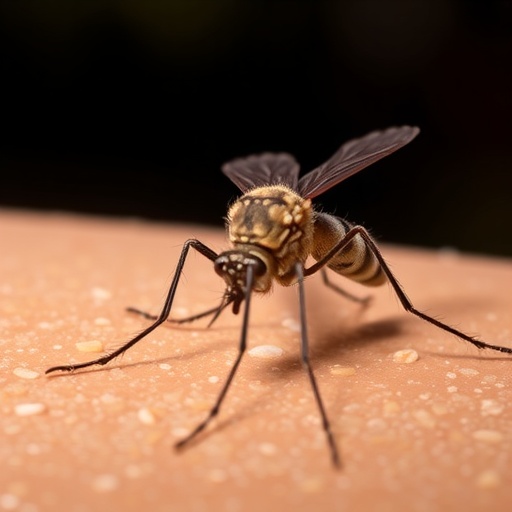In a groundbreaking advancement for vector-borne disease surveillance, researchers have devised a sophisticated statistical model capable of predicting West Nile virus activity in Florida up to six months before outbreaks occur. This innovative approach leverages two decades of sentinel chicken data to forecast viral transmission dynamics with unprecedented temporal precision, marking a significant leap forward in ecological disease forecasting.
For over forty years, Florida’s state and local health officials have maintained sentinel chicken coops strategically situated from the Panhandle down to Miami. These birds serve an essential public health role: by regularly testing chickens for antibodies indicative of West Nile virus infection, officials receive early warnings of emerging arboviral threats in different regions. Despite the apparent success of this method in averting larger outbreaks, the traditional sentinel system inherently operates with a lag—detection comes after viral activity has begun, limiting preventative interventions.
The newly developed predictive model circumvents this limitation by employing a comprehensive data-driven framework that integrates historic sentinel chicken surveillance with environmental variables including precipitation patterns, minimum and maximum temperature fluctuations, and land cover variables across Florida. By encoding these complex, nonlinear interactions, the model transcends static epidemiological snapshots, capturing the dynamic and interdependent ecological drivers that influence viral emergence and spread.
Notably, the study emphasizes the preservation of valuable epidemiological records. The original sentinel data, stored physically at the Florida Department of Health, was imperiled by a catastrophic flood, threatening to erase critical longitudinal datasets. Fortunately, a University of Florida professor safeguarded personal copies, enabling the research team to digitize and reconstruct the dataset. This recovery effort exemplifies the importance of data curation and cross-disciplinary collaboration in combating emerging infectious diseases.
The model’s construction incorporated advances inspired by principles from quantum mechanics and fluid dynamics, particularly the incorporation of latent variables and stochastic interactions within ecological systems. Unlike earlier models that treated disease distribution and timing as separate or static phenomena, this framework dynamically accounts for how conditions in one location might influence viral activity in another over time, addressing the inherent complexity of zoonotic transmission networks.
Retrospective model testing was conducted using data spanning 2001 to 2019, aligning model predictions with recorded seroconversion events in chickens as well as documented human and equine West Nile cases. Impressively, the model accurately reconstructed both the spatial and temporal patterns of viral activity, exhibiting highest fidelity in monthly forecasts and maintaining robust season-level predictive ability. These results underscore the model’s potential for operational deployment in public health decision-making.
Environmental drivers identified as critical predictors include elevated minimum temperatures and increased precipitation levels approximately two months prior to viral detection, both of which positively correlate with increased West Nile activity. Contrastingly, anomalously high maximum temperatures during the detection period exhibited a suppressive effect on viral prevalence. At the seasonal scale, moderate precipitation levels six months in advance surfaced as key signals, indicating a multifaceted temporal influence of climatic conditions on vector and host ecology.
Looking ahead, the researchers acknowledge that while the model is a milestone, it represents just a foundational step toward comprehensive arboviral forecasting. Integrating additional ecological data streams—such as avian host dynamics, mosquito vector distribution, and human behavioral patterns—will be essential for developing holistic, mechanistic models capable of capturing the full complexity of West Nile virus transmission cycles.
This research illuminates the expanding role of natural history museums and biodiversity informatics in public health sciences. Historically focused on cataloging Earth’s biological diversity, these institutions are increasingly invaluable in pandemic preparedness by fostering collaborations between specimen curators, data scientists, and disease ecologists. Digitized collections, often comprising billions of specimens, provide critical baselines for tracking zoonotic pathogens and reconstructing outbreak origins.
The transformative interdisciplinary effort behind this study also affirms the value of one-health frameworks, which integrate human, animal, and environmental health data across institutional boundaries. Such approaches are vital in unraveling the intricacies of arbovirus ecology, where multiple vector and host species are entwined in heterogeneous geographic and temporal patterns.
In light of these advances, Florida residents are encouraged to support sentinel monitoring programs. Local participation, such as adopting sentinel chickens, contributes directly to maintaining and enriching these critical surveillance networks, ultimately enhancing community resilience to emerging mosquitoborne threats.
By pioneering forward-looking surveillance methods, this work sets the stage for proactive disease control strategies. Health officials may soon shift from reactive outbreak responses to informed anticipatory measures, thereby reducing human and economic burdens associated with West Nile virus and potentially other zoonotic arboviruses.
Subject of Research: West Nile virus forecasting using sentinel chicken surveillance and environmental modeling
Article Title: Toward ecological forecasting of West Nile virus in Florida: Insights from two decades of sentinel chicken surveillance
News Publication Date: 9-Sep-2025
Web References: Science of The Total Environment article
Image Credits: Photo courtesy of Lawrence Reeves
Keywords: Disease control, Pathology, Mosquitos, Poultry, Natural history, Museums, Informatics




